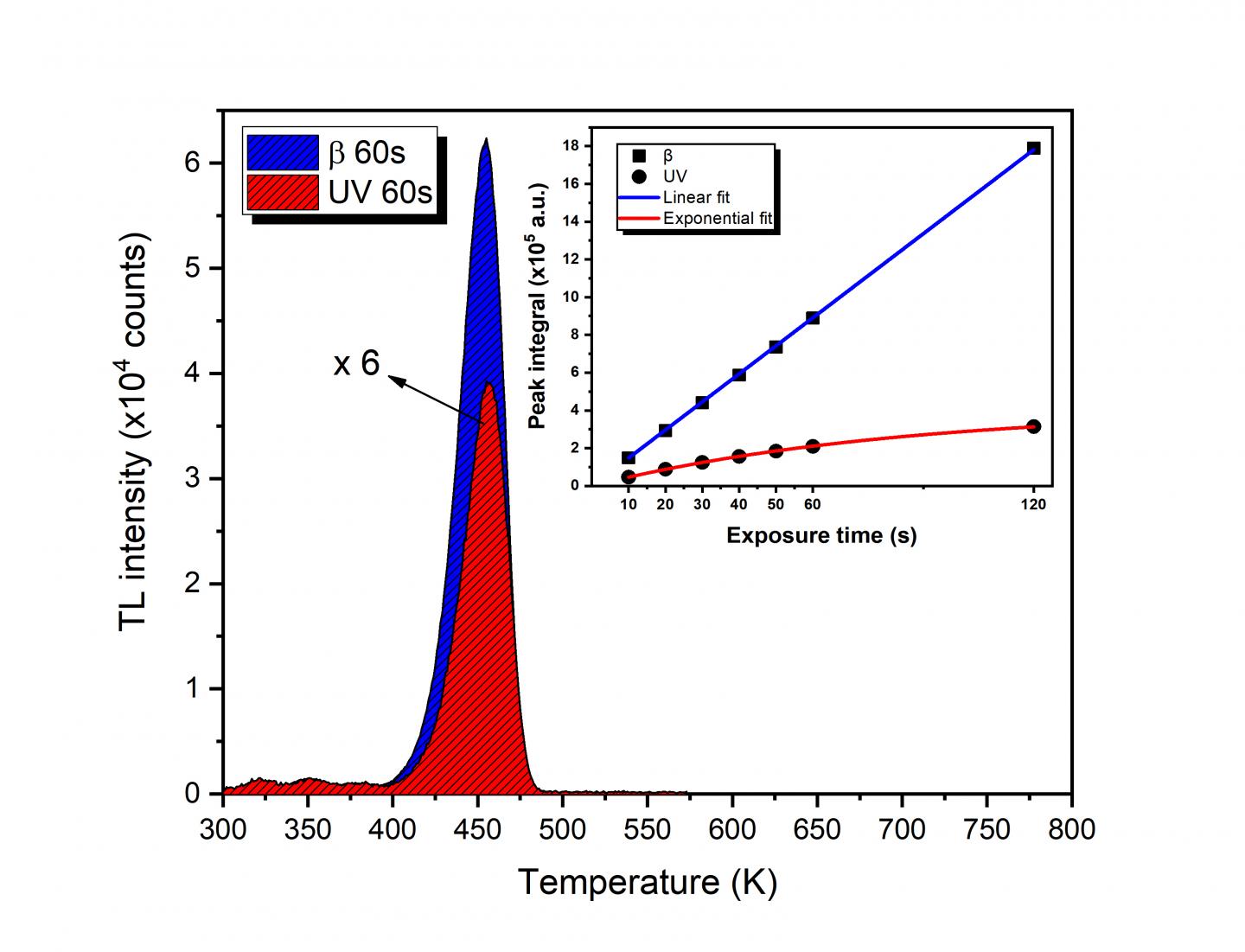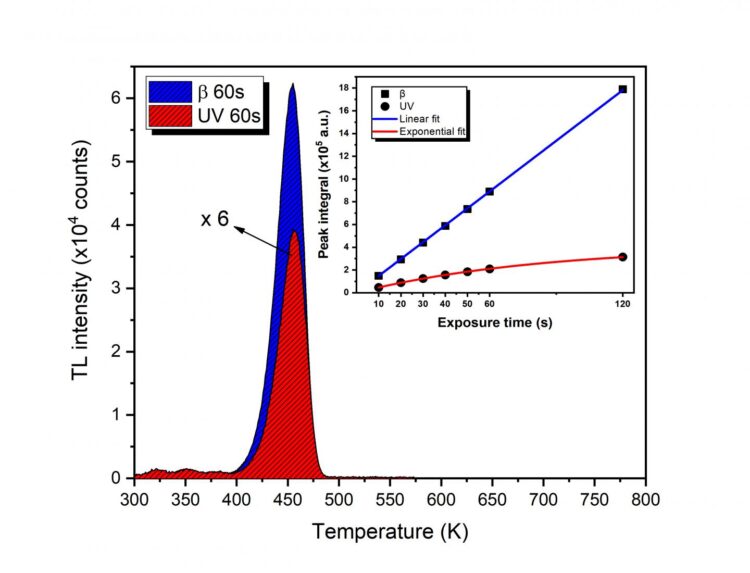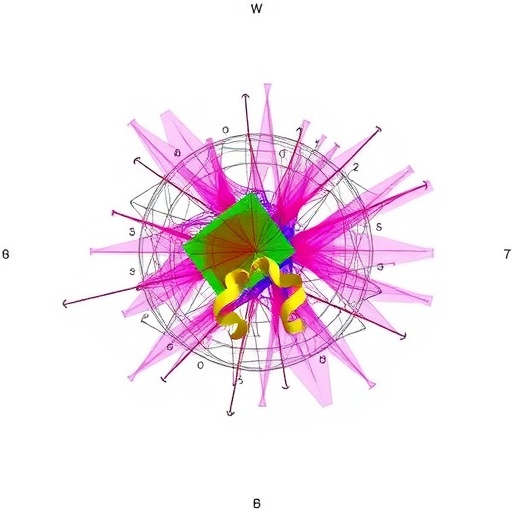Doped with carbon and magnesium, the material becomes thermoluminescent in response to UV radiation

Credit: Neilo Marcos Trindade and his team
Exposure to ultraviolet (UV) radiation is a risk factor for skin cancer and other diseases. The risk increases when sunlight, the natural source of UV radiation, is combined with artificial sources such as UV lamps for medical therapy, among others. Detecting and measuring UV exposure in different environments was the scope of a research project conducted in Brazil at the São Paulo Federal Institute of Education, Science and Technology (IFSP) in collaboration with the University of São Paulo Physics Institute (IF-USP).
The researchers investigated the sensitivity to UV radiation of aluminum oxide doped with carbon and magnesium (Al2O3:C,Mg), as reported in the article “Thermoluminescence of UV-irradiated α-Al2O3:C,Mg” published in Journal of Luminescence.
“Carbon-doped aluminum oxide [Al2O3:C] was already well known for its acute sensitivity to various kinds of radiation, such as X-rays and beta and gamma rays. It is used for personal and environmental UV dosimetry. What we discovered was that the material also responds to UV when it is doped with magnesium as well as carbon,” said Professor Neilo Marcos Trindade, first author of the article.
The response in question is thermoluminescence, light emission by a material when heated after being exposed to radiation. “Magnesium doping promotes a large number of defects in the crystal, and this makes the material respond even better to ionizing radiation and to nonionizing radiation like UV,” Trindade said.
The investigation was conducted by Trindade and two undergraduates, Maicon Gois Magalhães and Matheus Cavalcanti dos Santos Nunes, with the collaboration of Elisabeth Mateus Yoshimura, a professor at IF-USP, and Luiz Gustavo Jacobsohn, a professor at Clemson University in the United States. It was supported by São Paulo Research Foundation – FAPESP via a Regular Research Grant awarded to Trindade, a Scientific Initiation Scholarship awarded to Magalhães, and a Scientific Initiation Scholarship awarded to Nunes.
Other findings
In addition to the main discovery, which enables these crystals to be used to detect UV, Trindade and his students obtained two other important findings. The first was that the material’s response to UV radiation is analogous to its response to beta radiation, meaning that many measurements of beta radiation performed to date may have been affected by UV interference.
The second was that the two responses vary according to different patterns, enabling the UV interference problem to be solved in future devices. The material responds to beta radiation in a linear manner: its luminescence increases incrementally in a continuous curve as its exposure to ionizing radiation increases. In the case of UV radiation, the luminescence of the material does not vary linearly. “There is a saturation point after which the luminescence ceases to intensify even as exposure continues,” Trindade said.
###
About São Paulo Research Foundation (FAPESP)
The São Paulo Research Foundation (FAPESP) is a public institution with the mission of supporting scientific research in all fields of knowledge by awarding scholarships, fellowships and grants to investigators linked with higher education and research institutions in the State of São Paulo, Brazil. FAPESP is aware that the very best research can only be done by working with the best researchers internationally. Therefore, it has established partnerships with funding agencies, higher education, private companies, and research organizations in other countries known for the quality of their research and has been encouraging scientists funded by its grants to further develop their international collaboration. You can learn more about FAPESP at http://www.
Media Contact
Heloisa Reinert
[email protected]
Original Source
http://agencia.
Related Journal Article
http://dx.





